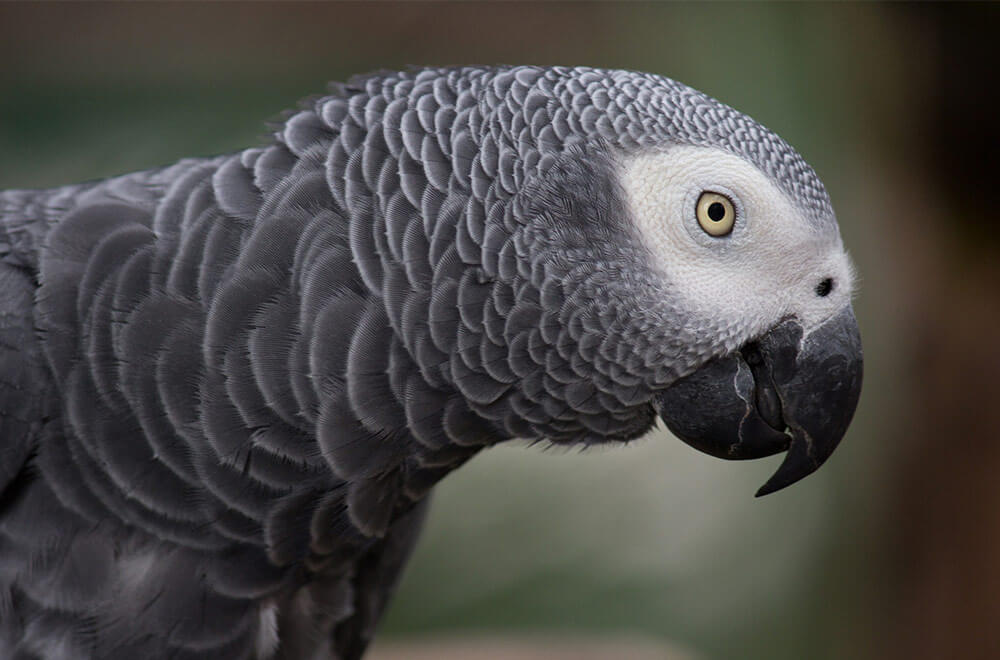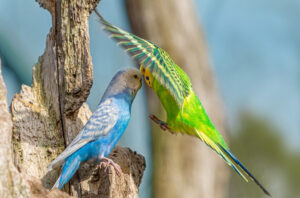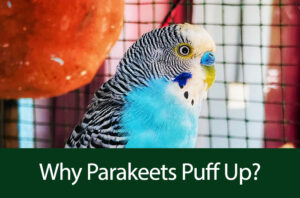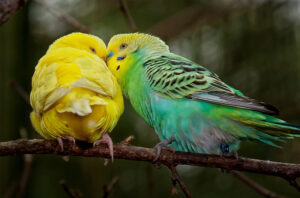The African grey parrot (Psittacus erithacus), also known as Congo grey parrot, is native to Central Africa. This is the largest parrot in the Africa and belongs to the Psittacidae family.
These medium-sized parrots have 2 subspecies and are believed to be one of the oldest bird species in the psittacine family. Coastal mangroves, forests, savannas, and woodlands are the most loving places for these parrots.
The grey parrot is famous for its great talking ability and intelligence and due to this reason it is sometimes called ‘The Einstein of the Birds Family’.
Homeland
The grey parrot comes from equatorial Africa – Cameroon, Gabon, Congo, Ghana, Kenya, Uganda, and Angola.
According to the population study established in 2015, these birds population have been continuously decreasing in Ghana since 1992.
They are largely present from Kenya to the eastern side of Ivory Coast. The current estimate for their global population is not known but it is present in the range from 630,000 to 13 million birds.
Scientific classification
- Scientific name: Psittacus erithacus
- Kingdom: Animalia
- Phylum: Chordata
- Class: Aves
- Order: Psittaciformes
- Family: Psittacidae
- Tribe: Psittacini
- Genus: Psittacus
- Species: P. Erithacus
Characteristics and features:
- Common names: Grey parrot, Congo grey parrot, Timneh grey parrot
- Color: These parrots are mostly found in grey color.
- Size and Weight: 31 – 36 cm (12 – 14 in) in length having 400 – 650 g (14 – 23 oz) weight.
- Lifespan: The African grey parrot can live for a long time. If they are given good care, then the average lifespan is more than 30 years
- Sound: The grey parrot is a vocal communicator. It has a vocalized voice and can interact with the people.
Subspecies of the grey parrot
Grey parrot has 2 different subspecies:
Congo African Grey – Psittacus erithacus erithacus
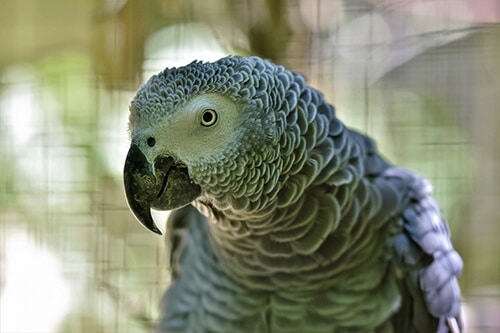
Timneh African Grey – Psittacus erithacus timneh
The Timneh African grey parrot lives in West Africa. They are smaller than Congo African grey parrots and are found in dark grey color with a black beak and tail. They are 28 – 33 cm (11 – 13 in) in length having 275 – 375 g (10 – 13 oz) weight.
Nutrition and diet
The grey parrot likes to eat the following food:
- Leaves
- Flowers
- Seeds
- Vegetables
- Fruits
See budgies diet to read more about a proper diet.
Relationship with humans
These birds are very famous among the people due to their fabulous beauty and many people have kept these beautiful parrots in their homes as companion birds. They have a very sharp memory and if they are given proper time, they can remember the voices and faces of various people in the house.
Behavior and personality
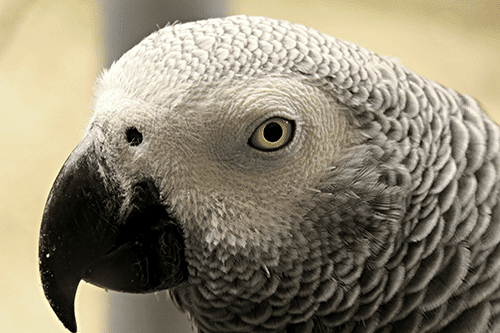
Baby Grey Parrot
The pretty baby grey parrot takes almost 28 days to come out of the egg after the female lay. These baby birds are fed and taken care from their parents in the nest. The parents look after them for 4-5 weeks until they start to take care of themselves and they leave the nest after 12 weeks.
If someone buys these baby parrots, he has to take more care for it as compared to the parent grey parrot. They need to be fed by the hand of the owner as they cannot eat by themselves.
Common health problems
The grey parrots can suffer from various health problems if they are not given enough care and food. One of the most common problems that grey parrots can face is hypocalcaemia. This disease is actually caused due to low levels of calcium in the body of grey parrot. If you feel that your parrot is lacking coordination and is unable to stand, it means he is suffering from this disease. Besides this, they may also suffer from other diseases like feather picking, vitamins deficiency, etc.
In order to ensure their good health, proper physical examination should be done every 6 – 12 months.
Quick information about the breeding of grey parrots
The African grey parrots usually make nests in tree cavities. Each pair of grey parrots needs a separate tree for making their nest.
- Breeding Season: July to January
- Clutch Size: 2-5 eggs
- Incubation time: 30 days
- Time in the nest: 40-45 days
Common questions about African grey parrots
Are African grey parrots friendly?
The grey parrots can be nice and friendly birds but it depends on how you treat them. If you will give them appropriate time and care, they will be attached to you and will show more love and affection than that you will be expecting.
How do I know if my grey parrot is happy?
Well, you can identify it by observing its body language or by noticing any unusual activity done by your parrot. If you feel that your parrot is not taking enough food, feeling difficulty in breathing, or unable to sit and stand properly, you can expect that your parrot is not happy or have some disease.
How much does an African grey parrot Cost?
You can expect to buy a grey parrot for about 1500 USD. Sometimes, physical appearance may change the price.
Want to adopt an African grey parrot? Check out Petfinder.com.
In the end, if you are impressed by the amazing characteristics of this parrot and are thinking to get him, make sure you have a proper place, food, and time for these parrots. Otherwise, if you buy them and have not enough preparation to keep them, their life will be in danger. With proper care and attention, they can live with you for more than 30 years.

